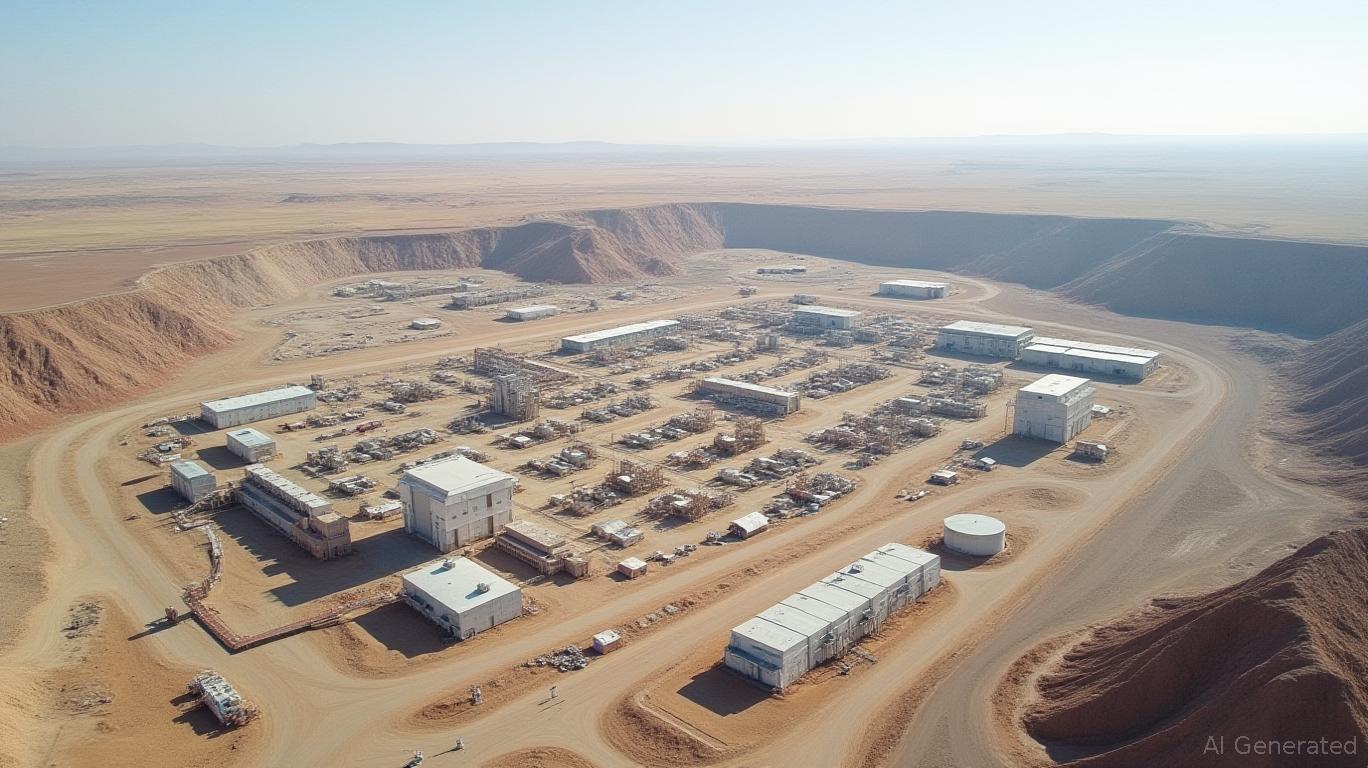Oyu Tolgoi's Strategic Pivot: A Test of Mining Agility Amid Licensing Uncertainties
Rio Tinto's decision to shift focus from Panel 1 to Panel 2 South at its Oyu Tolgoi copper mine in Mongolia underscores both the operational flexibility of modern mining projects and the persistent risks of regulatory delays in emerging markets. While the pivot has allowed the company to maintain its 2025 production targets, unresolved license transfers for the Entrée Resources joint venture area pose lingering questions about long-term costs, stakeholder value, and the viability of multi-decade mining ventures. For investors, the situation demands a cautious approach: Rio Tinto's agility is commendable, but unresolved regulatory hurdles could still disrupt its path to sustained profitability.
The Strategic Shift: Operational Agility in Action
The Oyu Tolgoi mine, one of the world's largest copper deposits, has long relied on its modular design to adapt to changing conditions. When licensing delays for the Entrée JV area stalled development in Panel 1—critical for long-term output—Rio Tinto swiftly redirected resources to Panel 2 South. This area, already under its operational control, has become the focal point for near-term production growth.

By accelerating work in Panel 2 South,
has insulated its 2025 copper production guidance of 780,000 to 850,000 tonnes. “The mine's design allows us to sequence development without sacrificing output,” said Katie Jackson, Rio's Copper CEO. This flexibility is a testament to the company's ability to navigate disruptions—a key advantage in an industry prone to geopolitical and regulatory volatility.The Licensing Labyrinth: Risks Linger
However, the unresolved transfer of licenses for the Shivee Tolgoi and Javkhlant mining areas—central to the Entrée JV—remains a critical vulnerability. Despite ongoing negotiations with the Mongolian government and Entrée Resources, the process has dragged on since February 2025. The delays stem from disputes over terms in the original 2008 JV agreement, including royalty structures and operational control.
The stakes are high. Entrée Resources, which holds a 20% stake in the JV area, has warned that prolonged delays could escalate costs, disrupt project timelines, and erode its share price. For Rio Tinto, the risks are twofold: delayed access to Panel 1 could force costly revisions to its long-term production plan, which aims to sustain 500,000 tonnes per annum from 2028 to 2036.
Balancing Near-Term Gains with Long-Term Uncertainties
Investors should take note of the diverging timelines here. While Rio Tinto's focus on Panel 2 South has kept 2025 production on track—bolstered by strong copper prices—the unresolved license issue creates a “double-edged sword” scenario. The company's agility buys time, but it cannot indefinitely delay resolution of the licensing dispute.
Entrée's concerns are particularly acute. If the JV area's development is significantly delayed or scaled back, Entrée's financial claims—based on production milestones—could diminish, impacting its valuation and cash flow. For Rio Tinto, the broader risk is reputational and financial strain from prolonged disputes with a key partner and the Mongolian government, which holds 34% of Oyu Tolgoi.
Investment Considerations: Hold Until Clarity Emerges
For now, Rio Tinto's stock reflects its ability to manage short-term risks, but long-term investors must weigh the potential for cost overruns and production delays. The company's valuation—already under pressure from broader commodity market volatility—could face downward pressure if the licensing issue drags into 2026.
Investors are advised to monitor two key metrics:
1. Progress on license transfers: A resolution by year-end would alleviate concerns about Panel 1's development.
2. Cost inflation trends: Rising labor and material costs could amplify the financial impact of any delays.
In the absence of clarity, Rio Tinto remains a cautious hold. While its operational adaptability is a strength, the unresolved regulatory risks and Entrée's stakeholder claims create material downside exposure. Investors with a long-term horizon should wait for concrete progress on licenses before considering a more bullish stance.
In an industry where projects often take decades to realize, Oyu Tolgoi's story is a reminder: even the most agile miners cannot outrun the law of the land.

Comments
No comments yet